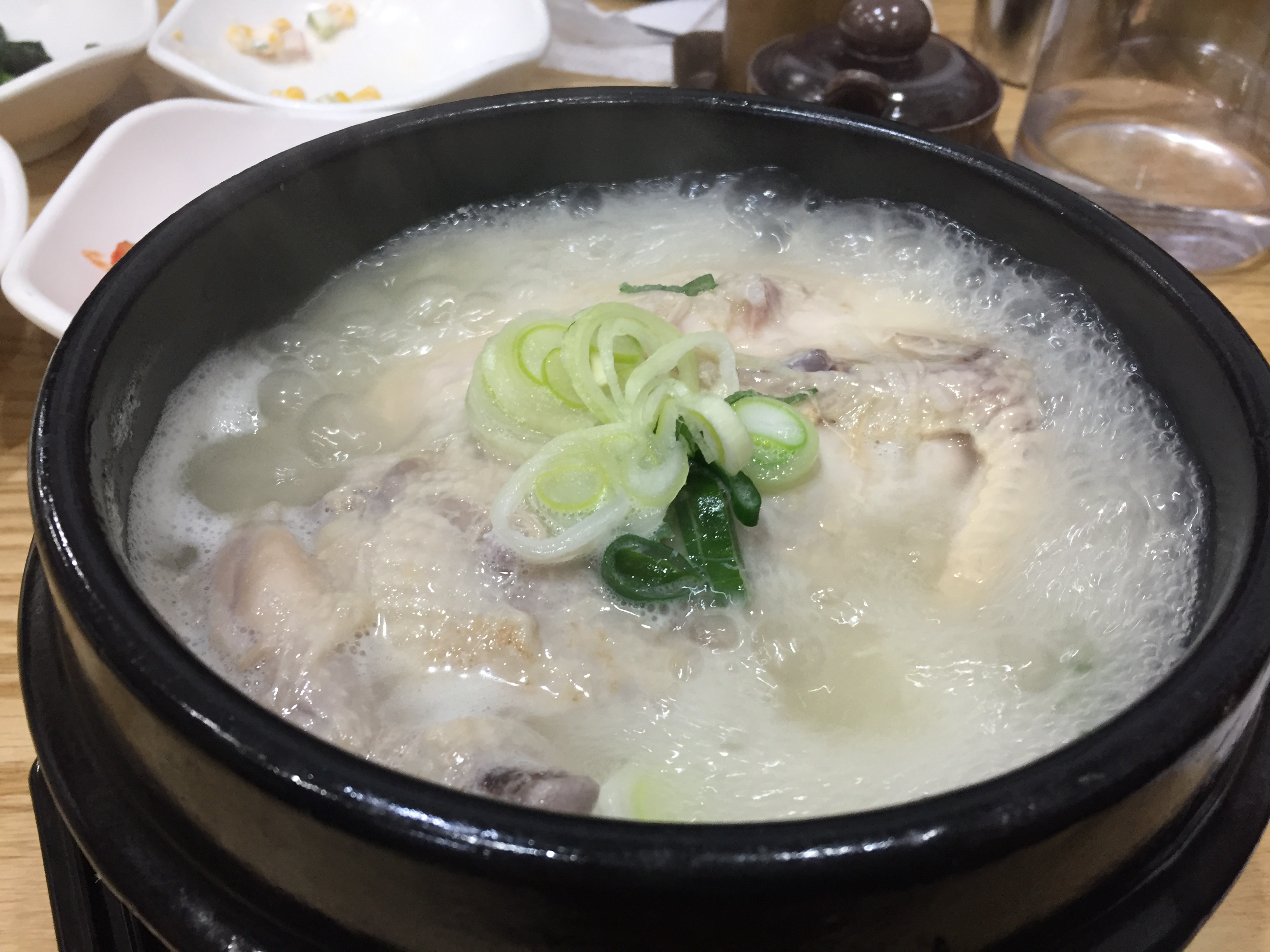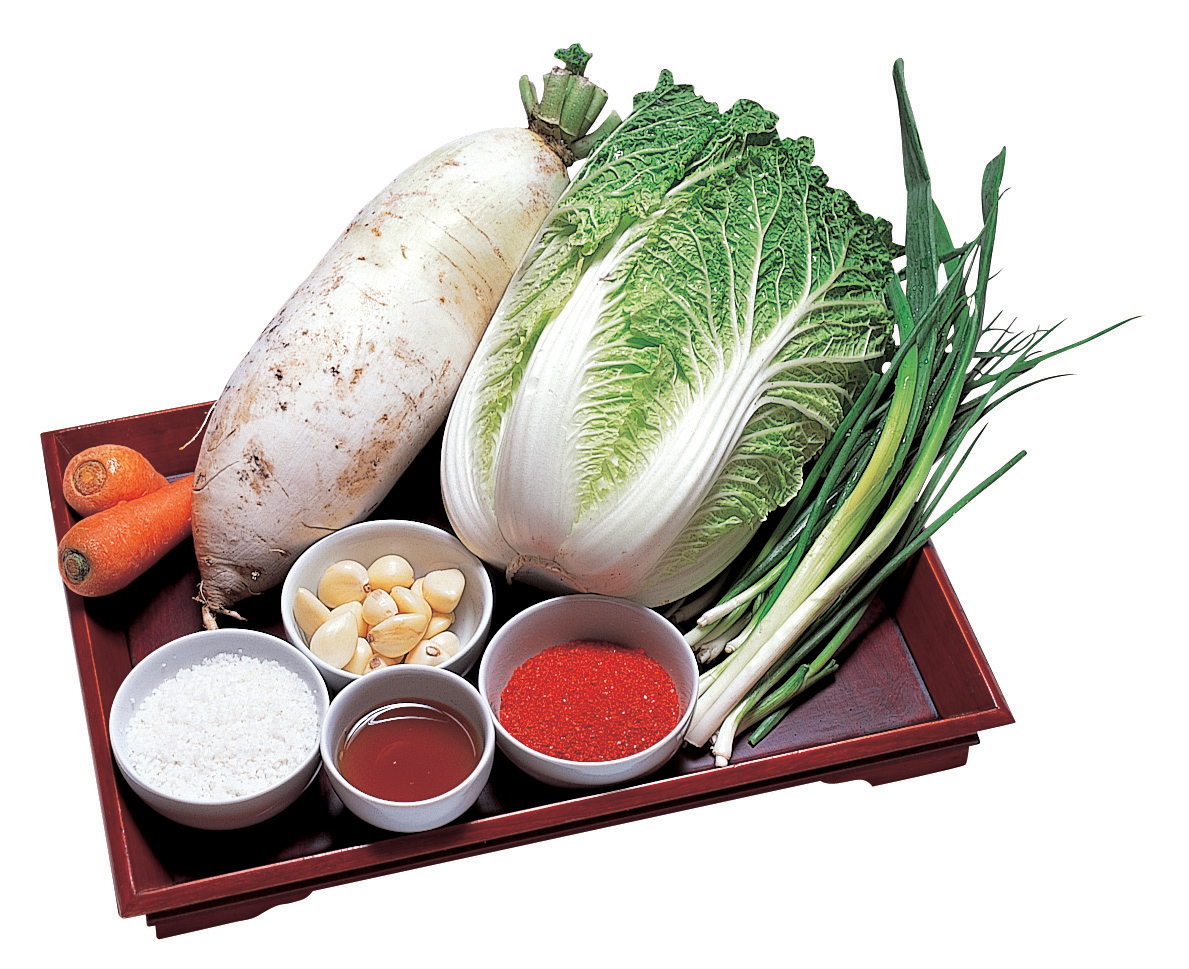|
Samgyetang
''Samgye-tang'' (), or " ginseng chicken soup" * is a '' tang'' (Korean soup) that consists primarily of a whole young chicken ( ''poussin'') or quail filled with garlic, rice, jujube and ginseng. It is traditionally considered to be a health food. ''Samgye-tang'' is a representative summer health food. Soup made with chicken that is slightly larger than the chick is called ''yeonggye baeksuk'', and the chicken is divided into half is called ''banggye-tang''. History During the Joseon period (1392–1897), people enjoyed the numerous chicken soup dishes that were similar to ''samgye-tang'', including ''yeongye-tang'', ''chonggye-tang'', and ''hwanggye-tang''. While it was the custom to make a soup with young chicken and serve it to elders during the summer days, the chicken boiled with milkvetch roots and its broth were served to the sick queen during King Injo's reign. However, the description of the dish that most closely resembles today's form of ''samgye-tang'' can be fo ... [...More Info...] [...Related Items...] OR: [Wikipedia] [Google] [Baidu] |
Baeksuk
Baeksuk () is a Korean culinary term referring to dishes made by boiling or steaming meat or fish to be cooked thoroughly without seasonings. ''Baeksuk'' is made with chicken or pheasant with plenty of water for several hours. However, the term generally indicates ''dakbaeksuk'' (닭백숙, chicken ''baeksuk''), or chicken stew, whose recipe and ingredients are similar to '' samgyetang''. While ''samgyetang'' is made with ginseng, various herbs, chestnuts, and jujubes, ''dakbaeksuk'' consists of simpler ingredients, such as chicken, water, and garlic. The chicken can be stuffed with glutinous rice. When the cooking is finished, salt and sliced Welsh onion ''Allium fistulosum'', the Welsh onion, also commonly called bunching onion, long green onion, Japanese bunching onion, and spring onion, is a species of perennial plant, often considered to be a kind of scallion. The species is very similar ...s (''daepa'', 대파) are added to the diner's bowl according to taste. If th ... [...More Info...] [...Related Items...] OR: [Wikipedia] [Google] [Baidu] |
Tang (food)
''Guk'' (), also sometimes known as ''tang'' (), is a class of soup-like dishes in Korean cuisine. ''Guk'' and ''tang'' are commonly grouped together and regarded as the same type of dish, although ''tang'' can sometimes be less watery than ''guk''. It is one of the most basic components in a Korean meal, along with ''bap'' (밥, rice), and ''banchan'' (반찬, side dishes). In Korean table setting, ''guk'' is served on the right side of ''bap'' (rice), and left side of ''sujeo'' (수저, a spoon and chopsticks). ''Guk'' is a native Korean word, while ''tang'' is a Sino-Korean word that originally meant "boiling water" or "soup". ''Tang'' has been used as an honorific term in place of ''guk'', when it denotes the same meaning as ''guk'' as in ''yeonpo-tang'' (연포탕, octopus soup), '' daegu-tang'' (대구탕, codfish soup), or ''jogae-tang'' (조개탕, clam soup). Generally, the names of lighter soups with vegetables are suffixed with ''-guk'', while heavier, thicker soups ... [...More Info...] [...Related Items...] OR: [Wikipedia] [Google] [Baidu] |
Jujube
Jujube (UK ; US or ), sometimes jujuba, scientific name ''Ziziphus jujuba'', and also called red date, Chinese date, and Chinese jujube, is a species in the genus '' Ziziphus'' in the buckthorn family Rhamnaceae. It is often confused with the closely related Indian jujube, '' Z.mauritiana''. The Chinese jujube enjoys a diverse range of climates from temperate to tropical, whereas the Indian jujube is restricted to warmer subtropical and tropical climates. Description It is a small deciduous tree or shrub reaching a height of , usually with thorny branches. The leaves are shiny-green, ovate-acute, long and wide, with three conspicuous veins at the base, and a finely toothed margin. The flowers are small, wide, with five inconspicuous yellowish-green petals. The fruit is an edible oval drupe deep; when immature it is smooth-green, with the consistency and taste of an apple with lower acidity, maturing brown to purplish-black, and eventually wrinkled, looking like a sma ... [...More Info...] [...Related Items...] OR: [Wikipedia] [Google] [Baidu] |
Korea
Korea is a peninsular region in East Asia consisting of the Korean Peninsula, Jeju Island, and smaller islands. Since the end of World War II in 1945, it has been politically Division of Korea, divided at or near the 38th parallel north, 38th parallel between North Korea (Democratic People's Republic of Korea; DPRK) and South Korea (Republic of Korea; ROK). Both countries proclaimed independence in 1948, and the two countries fought the Korean War from 1950 to 1953. The region is bordered by China to the north and Russia to the northeast, across the Yalu River, Amnok (Yalu) and Tumen River, Duman (Tumen) rivers, and is separated from Japan to the southeast by the Korea Strait. Known human habitation of the Korean peninsula dates to 40,000 BC. The kingdom of Gojoseon, which according to tradition was founded in 2333 BC, fell to the Han dynasty in 108 BC. It was followed by the Three Kingdoms of Korea, Three Kingdoms period, in which Korea was divided into Goguryeo, Baekje, a ... [...More Info...] [...Related Items...] OR: [Wikipedia] [Google] [Baidu] |
Encyclopedia Of Korean Culture
The ''Encyclopedia of Korean Culture'' () is a Korean-language encyclopedia published by the Academy of Korean Studies and DongBang Media Co. It was originally published as physical books from 1991 to 2001. There is now an online version of the encyclopedia that continues to be updated. Overview On September 25, 1979, a presidential order (No. 9628; ) was issued to begin work on compiling a national encyclopedia. Work began on compiling the encyclopedia on March 18, 1980. It began publishing books in 1991. The encyclopedia's first version was completed, with 28 volumes, in 1995. It continued to be revised beginning in 1996. In 2001, the digital edition EncyKorea was published on CD-ROM A CD-ROM (, compact disc read-only memory) is a type of read-only memory consisting of a pre-pressed optical compact disc that contains computer data storage, data computers can read, but not write or erase. Some CDs, called enhanced CDs, hold b ... and DVD. It launched an online version in 20 ... [...More Info...] [...Related Items...] OR: [Wikipedia] [Google] [Baidu] |
Trade Secret
A trade secret is a form of intellectual property (IP) comprising confidential information that is not generally known or readily ascertainable, derives economic value from its secrecy, and is protected by reasonable efforts to maintain its confidentiality. Well-known examples include the Coca-Cola formula and the recipe for KFC Original Recipe, Kentucky Fried Chicken. Unlike other forms of IP, trade secrets do not require formal registration and can be protected indefinitely, as long as they remain undisclosed. Instead, Non-disclosure agreement, non-disclosure agreements (NDAs), among other measures, are commonly used to keep the information secret. Like other IP assets, trade secrets may be sold or licensed. Unauthorized acquisition, use, or disclosure of a trade secret by others in a manner contrary to honest commercial practices is considered misappropriation of the trade secret. If trade secret Misappropriation of assets, misappropriation happens, the trade secret holder ... [...More Info...] [...Related Items...] OR: [Wikipedia] [Google] [Baidu] |
Insam-ju
''Insam-ju'' (), also called ginseng liquor or ginseng wine, is an alcoholic beverage made of ginseng Ginseng () is the root of plants in the genus ''Panax'', such as South China ginseng (''Panax notoginseng, P. notoginseng''), Korean ginseng (''Panax ginseng, P. ginseng''), and American ginseng (''American ginseng, P. quinquefol .... As ginseng itself, the liquor is one of the specialities of both North and South Korea. The liquor can be served either cold or hot. References Korean alcoholic drinks Panax {{Korea-cuisine-stub ... [...More Info...] [...Related Items...] OR: [Wikipedia] [Google] [Baidu] |
Silkie
The Silkie, also known as the Silky or Chinese silk chicken, is a Chinese breed of chicken named for its atypically fluffy plumage, which is soft to the touch, like silk or fur. Other unusual qualities include black skin and bones, blue earlobes, and pentadactyly (five toes on each foot) – most chickens have only four. The birds are commonly reared for exhibition in poultry shows, and a number of color varieties have been bred: the Entente Européenne recognises ten plumage colors, the American Poultry Association seven, and the Poultry Club of Great Britain five. there are both bearded and non-bearded forms of most colours. In European countries both bantam and large fowl are recognised, while in the United States only the bantam is listed. Silkie hens show a strong tendency to broodiness, and are commonly used to hatch eggs from other breeds and bird species; as a result of the same tendency, they lay relatively few eggs. History It is unknown exactly where or whe ... [...More Info...] [...Related Items...] OR: [Wikipedia] [Google] [Baidu] |
Kimchi
Kimchi (; ) is a traditional Korean side dish (''banchan'') consisting of salted and fermented vegetables, most often napa cabbage or Korean radish. A wide selection of seasonings are used, including '' gochugaru'' (Korean chili powder), spring onions, garlic, ginger, and '' jeotgal'' (salted seafood). Kimchi is also used in a variety of soups and stews. Kimchi is a staple food in Korean cuisine and is eaten as a side dish with almost every Korean meal. There are hundreds of different types of kimchi made with different vegetables as the main ingredients. Examples of variants include ''baechu-kimchi'', ''kkakdugi'', '' chonggak-kimchi'', and '' oi-sobagi''. Traditionally, winter kimchi, called '' gimjang'', was stored in large earthenware fermentation vessels, called '' onggi'', in the ground to prevent freezing during the winter months and to keep it cool enough to slow down the fermentation process during summer months. The process of making kimchi was called gimjan ... [...More Info...] [...Related Items...] OR: [Wikipedia] [Google] [Baidu] |
Refrigerator
A refrigerator, commonly shortened to fridge, is a commercial and home appliance consisting of a thermal insulation, thermally insulated compartment and a heat pump (mechanical, electronic or chemical) that transfers heat from its inside to its external environment so that its inside is cooled to a temperature below the room temperature. Refrigeration is an essential Food preservation, food storage technique around the world. The low temperature reduces the reproduction rate of bacteria, so the refrigerator lowers the rate of Food spoilage, spoilage. A refrigerator maintains a temperature a few degrees above the freezing point of water. The optimal temperature range for perishable food storage is .Keep your fridge-freezer clean and ice-free ''BBC''. 30 April 2008 A freezer is a specialized refrigerator, or portion of a refrigerator, that maintains its contents’ temperature below the freezing point of water. The refrigerator replaced the icebox, which had been a common househ ... [...More Info...] [...Related Items...] OR: [Wikipedia] [Google] [Baidu] |





